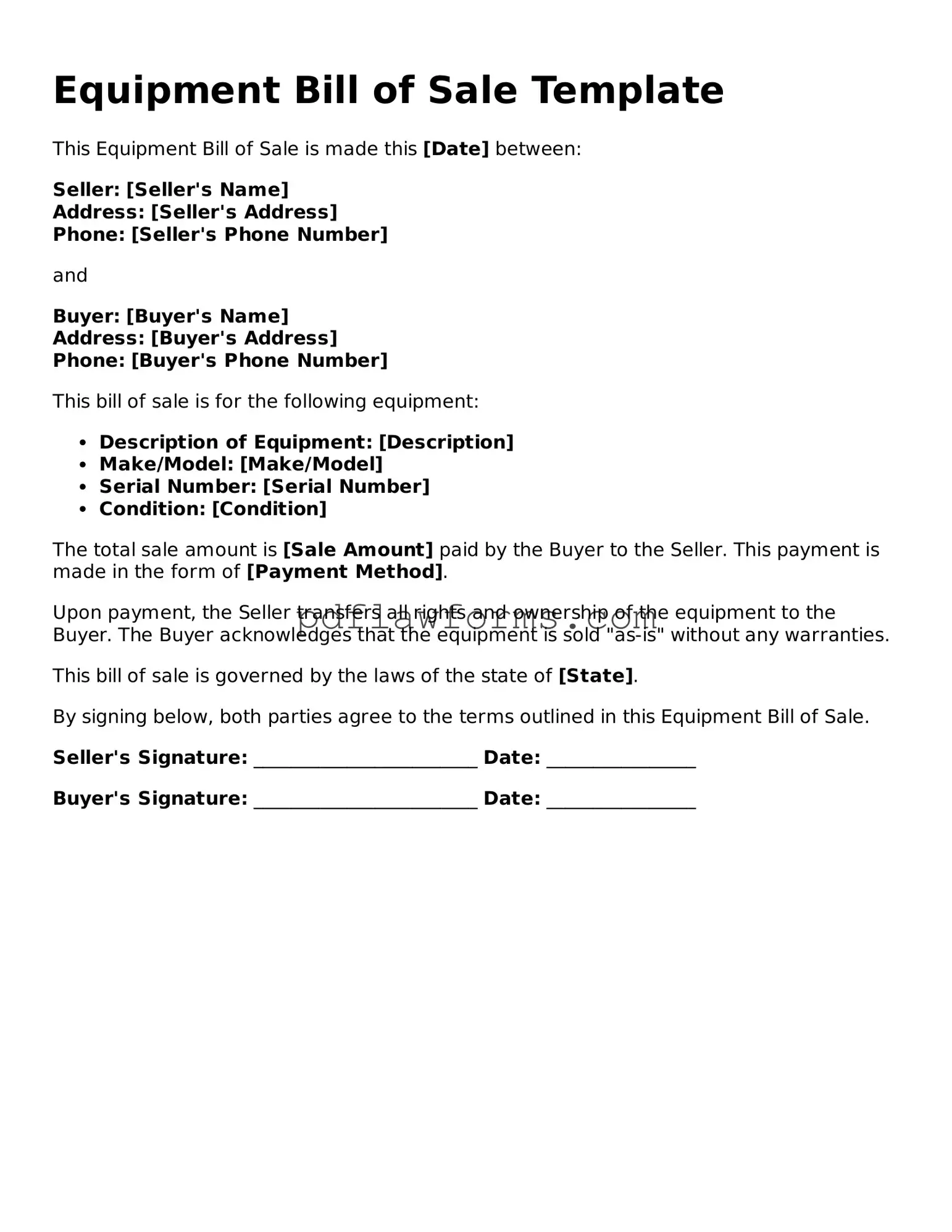When filling out an Equipment Bill of Sale form, many individuals make common mistakes that can lead to confusion or legal issues down the line. One frequent error is not providing complete information about the equipment being sold. Buyers and sellers should include details such as the make, model, year, and serial number. Omitting this information can create uncertainty about what exactly is being sold.
Another mistake is failing to accurately state the sale price. It’s essential to clearly indicate the amount agreed upon for the equipment. If this information is incorrect or missing, it can lead to disputes later. Both parties should double-check the figures before finalizing the document.
Many people also overlook the importance of including both parties' full names and contact information. This detail helps establish clear ownership and ensures that both parties can be reached if needed. Without this information, the transaction may lack the necessary transparency.
Not signing the document is a critical oversight. Both the buyer and seller must sign the Equipment Bill of Sale to make it legally binding. A signature indicates agreement to the terms outlined in the document. Without signatures, the sale may be considered incomplete.
Additionally, failing to include the date of the transaction is another common mistake. The date is important for record-keeping and can affect warranty claims or returns. Always remember to date the document when completing the form.
Some individuals forget to keep copies of the completed Bill of Sale. Both parties should retain a copy for their records. This serves as proof of the transaction and can be helpful in case any issues arise in the future.
Lastly, neglecting to check local laws regarding equipment sales can lead to complications. Different states may have specific requirements for Bills of Sale. It’s wise to review these regulations to ensure compliance and avoid potential legal issues.
